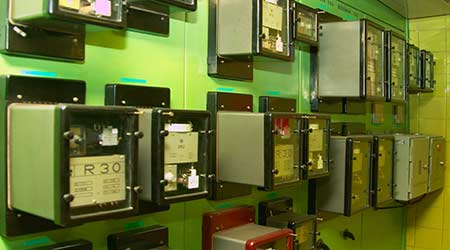Measuring, Verifying, and Reporting Energy Project Results
Last of a 3-part article on how facility managers should use numbers to plan energy measures and to prove they worked
It is essential to understand and plan for the measuring and verifying of energy savings after a project is completed. If you are not going to keep score after a project, then it does not matter what you do; if, however, you are going to keep score, then everything matters. With that in mind, it’s important to use conservative assumptions in the energy audits and sales proposals, since real-world project results should be reported back to senior management via the formal measurement and verification (M&V) process.
A facility manager’s reputation will be on the line based on ECM recommendations and results. Experience has shown that, over time, facility managers will get more energy efficiency projects funded when the M&V process documents that projects met or exceeded conservative ROI projections. It’s better to have a project not sell than to be red-faced later and forced to report that the projected energy savings were not achieved. It is best to build energy savings projections on very conservative assumptions based on the data that is collected and analyzed.
Actual energy-savings performance is documented in the M&V process in several ways. First, there is simple year-over-year raw data formatting, which ignores all variables such as heating degree days, cooling degree days, building(s) hours of operation, additions or removals of equipment in building, and production data in manufacturing settings. Production data, average occupancy, etc., will be of interest to senior management in reviewing the real-world performance of an energy project. A second or third version of the energy project performance data can also be presented with adjustments for heating and cooling degree days or for other factors. Other factors, such as changes in utility rates or replacing an old utility meter that was running slow (the new meter will show more consumption), can also affect M&V reporting. The goal is to fairly and accurately present the data without any bias or adjustments that could be challenged.
In energy savings performance contracting (ESPC), some forecasts of cost savings are based on assumptions of operational savings and stipulated savings for some ECMs. Both can become problematic in M&V reporting even though they may be correct based on the formal ESPC contract language, including any level of energy consumption or dollar cost savings guarantees.
With stipulated savings, the ESCO (energy service company) and customer agree to the energy savings in units and dollars before the project begins and apply this as part of the annual savings calculations and part of any savings guarantee. The customer agrees or stipulates that this “savings” occurs and that it does not need to be measured, metered, or estimated based on modeling, etc.
Utility rates will increase or decrease over a 10-, 15-, or 20-year ESPC contract period, so those elements need to be considered before signing a long-term ESPC contract.
Plan For M&V Expenses
Facility managers should plan and budget for M&V expenses as part of an energy efficiency project. Some utility or state demand side management (DSM) programs require M&V of actual energy savings to determine the level of DSM rebates or verify the accuracy of the energy audits and related DSM payments made. M&V should be part of every energy savings project.
Failing to provide M&V reporting on energy efficiency projects is a mistake for a facility manager’s career. Company and nonprofit executives expect facility managers to provide M&V reporting even if the term is not used in the discussion. Businesses of all kinds are all about producing results. Senior management will not repeat investments in energy efficiency if they do not produce predictable results. The good news is that business will continue to fund energy efficiency projects when they meet or exceed the projected results. In some cases, business executives will encourage a higher level of investment in energy conservation since these investments can exceed the ROI of alternative uses of company funds.
Richard G. Lubinski, CEM, CEA, CDSM, is president of Think Energy Management LLC, an energy consulting firm. Reach him at rick@think-energy.net.
Related Topics:














